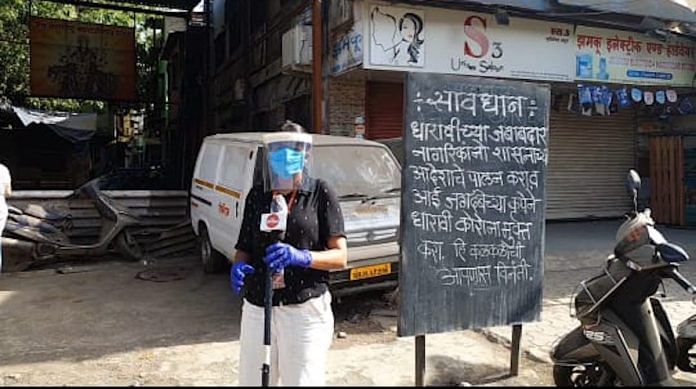I write this at the risk of being labeled a ‘snowflake’, a derogatory term often used against millennials for showing emotions that others can’t handle. I have been reporting on the ground for 28 days — travelling through Rajasthan, Gujarat, Maharashtra and Madhya Pradesh — and covering the coronavirus pandemic and the lockdown. Before that, I covered the Delhi riots and attack on Delhi’s universities. The last six months have been a rude jolt to my beliefs as a journalist.
Citizens have the privilege of tuning out for a while when it all gets too much, journalists don’t. We are out there listening to men and women cry over dead bodies and witness five-year-olds walk on hot asphalt roads carrying bags full of clothes. We talk to them, listen to them, write it in our reports and show it in our videos. But what after that?
I am often left wondering, how can we really help them? How humane are we? It made for a ‘great story’, but did it do them any better? BBC Hindi journalist Salman Ravi, who gave his shoes to a worker going back home barefoot, probably thought the same.
We journalists witness it all, but often forget to process it. We see the suffering around us, but we suffer silently ourselves, no matter how seasoned. The constant turn of events is bound to produce a generation of journalists with mental health issues. Witnessing another human’s trauma is not something that a brain takes lightly. The coronavirus pandemic has a mental health cost for those on the frontline, and unless we start talking about it and deploy tools to overcome it, we will be suffering for a long time.
Also read: From death to life in 72 hours — my 10 days on the road covering Covid through UP, Bihar
A ‘good story’
I have been on the road for a month now. Every day is a challenge, a fight that I must win — I must not catch the virus. Fitness plans have been replaced with stories of stress. Every time we hit a highway, I brace myself, for I know I am only looking for a ‘great story’. We meet labourers and give them food, water and hear their stories. These soon appear on websites and newspapers, and the labourers walk on.
A recent video on Twitter of a labourer reportedly eating dog meat on the Delhi-Jaipur highway shook me to my core. It reminded me of the time when we met two skinny women on the outskirts of Rajasthan’s Kishangarh on 7 May. They hadn’t eaten in a week. They tore into the biscuit packets we gave, ravenous. The women lived in shanties nearby and did odd jobs to get by, the lockdown had dried up their income. Can you imagine the misery it takes to condition a human mind to repeat the sentence ‘hum toh gareeb hai na (it’s because we are poor)’ to justify the wrongs they are being put through?
Also read: Disbelief, guilt, regret, amusement — when a Covid reporter herself tests positive
A long year
This year has been a hard one. And for me, it started when 2020 was around the corner.
On 15 December 2019, when the Delhi Police attacked Jamia Millia Islamia students in their campus, I was sitting alone in the office and editing an episode of ThePrint’s Editor-in-Chief Shekhar Gupta’s Cut The Clutter, a daily analytical video.
In the middle of the chaos, reporters and social media started throwing a steady stream of graphic videos of violence, which I had to edit. The end result was heavily blurred videos for viewers, but I had to see the blood and gore on my screen. I remember vividly how moved most newsrooms were for the first few days. Reports of suffering, misery, and anger made headlines in every newspaper, TV channel and website. Little did we know what the year ahead had in store for us.
After Jamia, Jawaharlal Nehru University students were attacked. The anti-Citizenship Amendment Act protests gained momentum and Shaheen Bagh became the point of focus again. The communal campaigning for elections and the Delhi riots followed.
When the northeast Delhi riots were at its peak, my colleagues Fatima Khan and Revathi Krishnan saw their ‘first dead body on field’, as they call it. Now when they talk about it, they say they ‘brushed it under the rug’ then. But even today Mubarak Hussain’s smashed face is etched in their minds. While they reported with exemplary faith and courage, everything has a subconscious cost. The id leaks emotions.
Also read: Reporting from Bhilwara was scary as the enemy was invisible. It was a virus
The right armour
As the flames of a burning capital were extinguished, little did we know a pandemic was coming for us. It felt like nature’s slap on humanity’s proud face. And journalists were in the thick of it again. We are still working relentlessly, seeking the truth while a virus seeks us.
But apart from our gloves and masks, journalists also need mental health armour. Process the suffering you see and reach out for help. Talk beyond ‘story ideas’. Take breaks. Regroup, reassess and come to terms with your thoughts, emotions and feelings.
As a colleague said, journalists have always experienced trauma, it is only a matter of acknowledging it.
Views are personal.



